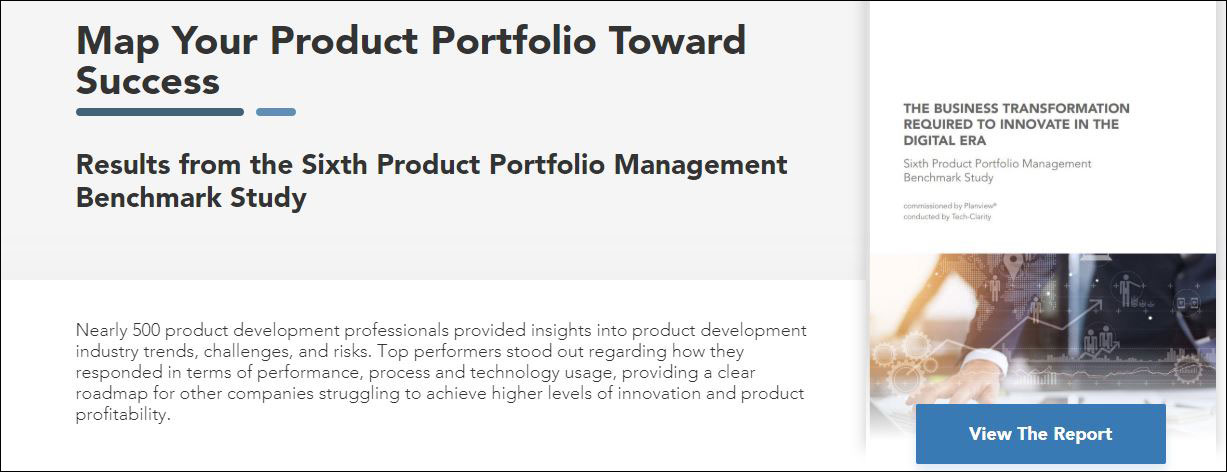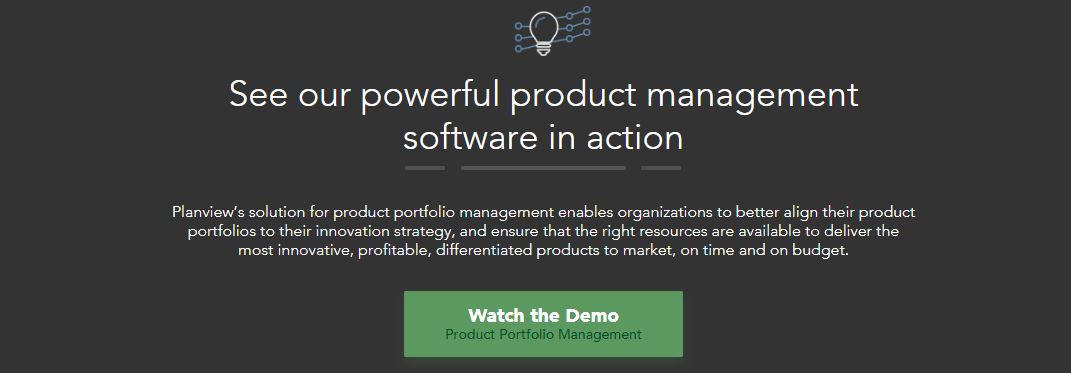
As a product leader, your job is to ensure business growth and innovation. However, the product development process is becoming more difficult due to the push for smarter, more connected products. The convergence of products and technology is fundamentally changing the way companies think and conduct business—a shift that is forcing leaders to navigate through uncharted waters and question, “What is the current state of product portfolio management?”
Part 1: Complexity is on the Rise
In the Sixth Product Portfolio Management Benchmark Study, commissioned by Planview and conducted by Tech-Clarity, nearly 500 product development professionals provided insights into product development industry trends, challenges, and risks.
In this eight-part series, we will pick apart the research findings and share them with you. Part one outlines the premise of the research, provides insight into the current state of product portfolio management by highlighting the industry challenges, and introduces top performers and what they are doing differently. Let’s begin.
The Research and Discovery
Because this is the sixth body of research on the product development industry, researchers included both innate and trend questions but also wanted to dig deeper into the following:
- How are companies managing their innovation portfolios and commercialization processes as their business (and the world) goes digital?
- If companies are looking to launch smart, connected products to their customers, how are they using software solutions internally to ensure they’re getting the right value from their product innovation spend?
- How does adoption of these digital approaches impact revenue, margins, and portfolio innovation, and which are the most important drivers of profitability?
The State of Product Portfolio Management—The Challenges
Innovation has always been crucial to long-term success and growth. But with today’s transformative shift in how product innovation is conducted, product leaders are facing new, more complex challenges. Most are aware of these challenges and may be taking steps to improve, but all are ultimately forced to rethink their approach to product innovation.
Familiar Challenges:
- Approving too many projects for resources;
- Killing products too late in the commercialization process;
- Missing time to market;
- Achieving launch and revenue goals; and
- Lacking visibility across the organization.
New Challenges to Address and Questions to Consider
- A complicated web of interrelationships: What technology and capabilities do we currently have that we can leverage now, instead of starting new?
- A need for new skills and business capabilities: Do we have the right people with the right skills, and do our business capabilities support new investments on innovation?
- Ever-changing market conditions and emerging competitors: How do we ensure we can move quickly and have a first to market advantage?
- Product development teams must now focus on dependent variables such as products, technologies, services, locations, applications, and other essentials—often concurrently. How can we ensure we are connecting all teams and dependencies to ensure successful launch windows?
The approach of top performers
Taking all these challenges into account, the survey identified top performers as those with better revenue growth, margin expansion, and portfolio innovation compared to competitors. It found they were remarkable regarding how they responded to performance, process, and technology usage through the following best practices.
By using project management technology, top performers:
- Make decisions based on more accurate, timely portfolio data;
- Consistently follow portfolio processes;
- Reallocate people and money to higher value innovations;
- Achieve improved portfolio and capacity management and planning.
The insights from these top performers present a clear roadmap for other companies that may be struggling to achieve higher levels of innovation and product profitability. Read the executive overview: Five Things Top Performers Do Differently to Deliver Profitable, Innovative Products.
Follow along with this eight-part series regarding the discipline and importance of PPM to set your organization on the right path. In our next installment we’ll look at examples of these kinds of enabling technologies and how they can be applied for the competitive edge all companies should currently be seeking. Check out the results and “Map Your Product Portfolio Toward Success.” Also, be sure to read the full benchmark report on product portfolio management and register for the webinar, “The Surprising Secrets to Delivering Smarter, More Connected Products,” to learn more.
Keep reading this eight-part series, listed below:
- Part 2: Connecting Innovation Investments with Delivery
- Part 3: Managing Product Portfolio Challenges in the Digital Age
- Part 4: Ensuring the Life Blood of Your Business: Data Visibility
- Part 5: Product Development Processes: Changing the Game
- Part 6: Technology: The Key to Resolving Product Portfolio Challenges
- Part 7: A Product Development Process for Successful Strategic Outcomes
- Part 8: 6 Product Portfolio Management Best Practices


![The 2018 Product Portfolio Management Survey Shines A Light on Top Performers [Video]](https://blog.planview.com/wp-content/uploads/2018/06/PDPM-study.gif)
![Product Portfolio Management in the Digital Era [Webinar]](https://blog.planview.com/wp-content/uploads/2017/09/Product-Portfolio-Management-in-the-Digital-Era-750x400.jpg)

